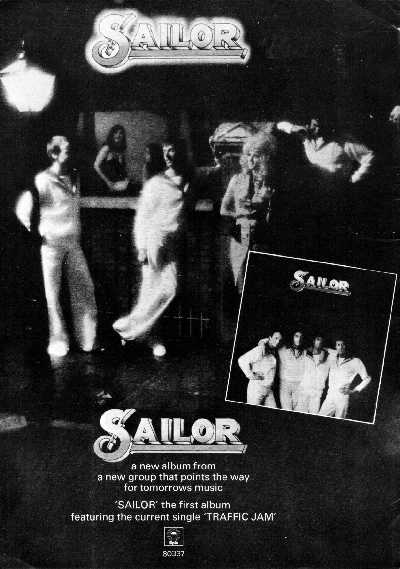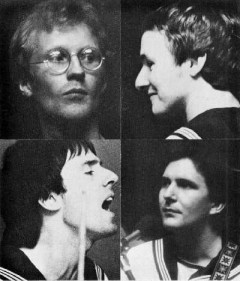|
Scrapbook
|
|
Scrapbook
|
Tour programme 1974
This tour with Mott The Hoople was planned for late 1974, but then cancelled!


Paris 1936. Le Matelot, a small,
smoke-filled cave buried deep inside the French capital. Early
spring: the evening unseasonably warm. Conversation subsides.
Four itinerant musicians begin playing to an amused clientele of
writers, painters and other musicians. The music never stops, it
fills the room, intrudes onto the street carries itself into the
history of modern music.
The musicians hired that night by M. Faux, the enigmatic
proprietor of La Matelot, were the first in an ever-changing
troupe, each bringing a peculiar talent, a special interest. They
came from around the world, from a wealth of disparate musical
background, each new artist taking the place of another grown
tired of Paris. In the course of the next three and a half
decades, the house band at Le Matelot would provide a musical
tradition that paralleled and often profoundly influenced the
devolopment of contemporary polular music. As one American critic
recently pointed out, "... the Matelot... has been the scene
of thc most portentious events in the music of our century".
Indeed, the history of the cafe reads like a survey of
contemporary popular art. During the late thirties, Panama Al
Browrn would stop by after the Cirque Mendrano to sing, dance or
simply to play solid black jazz to Fitzgerald or Chagall, while,
on another night, Josephine Baker would silence the boasting and
singing, stunning not only the Matelot's normally blase patrons,
but also members of the usually unshockable French press, one of
whom wrote, "Miss Baker's superb brown thighs... seem
without argument what Offenbach had in mind". Elsa Maxwell
belted sounds at Janet Flanner, while Mimsy Turner spun her
beadad skirts into the faces of Europe's avant-garde. And the
coffee house that Hemingway had fondly called "that
contagious box of music" began fostering its reputation as
patron of new and aspiring musical talent.
Always maintaining its international flavour, the never-ending
stream of SAILOR musicians (the group adopted the fashionable
English translation of its name in l939) came to include such
legendary names as Michel Michaud, Wilbur 'Gazoots' Mahoney,
Dickie Doringo and the Austrian Franz Weber.
For thirty five years Le Matelot survived Europe's most
cataclysmic events. Even throughout the Second World War, the
famous Cafe preserved whatever civiiisation existed in occupied
Paris, not only serving as a meeting place for artists (it was
during the forties that the famous magazine 'Le Matelot Flasque'
appeared), but for influential members of the French underground
as well.
But in 1971, disaster struck. Fire swept the Matelot, and, in one
fiery evening, a musical and cultural landmark was obliterated.
The unbroken thread of musical history wus snapped, and for two
years the last members of SAILOR, Le Matelot's famous band, kept
themselves hidden from the public eye.
The second cycle of the SAILOR legend began last summer, when
Steve Light Quarter Review for CBS, the European offices of the
company were flooded with calls and telegrams. "We felt like
we were under siege", said Steve Morris the company's vice
president, who was in London at the time. "For a week after
the announcement in Hollywood, we couldn't get in or out of the
front door. We had to use the service elevator, and climb through
the garage roof".
The music of SAILOR will astonish those not fortunate enough to
have heard it before. For well-travelled Americans, as well as
thousands of European music lovers, the revival of SAILOR is
miraculous news. That which many feared had been drowned in fire
in 1971 has been re-born, and is rising.
Morris, son of music mogul Edwin H. Morris discovered one of the
last members of the group, Phil Pickett, jamming with a group of
studio session-men, after a demo session. He told Steve an
amazing story of weatlh and ruin, hope and failure. Between them
they managed to pick up all the threads that linked all the
SAILOR musicians back together again.
When the Hollywood music publishing firm. Edwin H. Morris,
announced that SAILOR would soon release a recorded version of
the Red
For unknown reasons, the text ends right here... (this was also the case in the original tour programme!?)